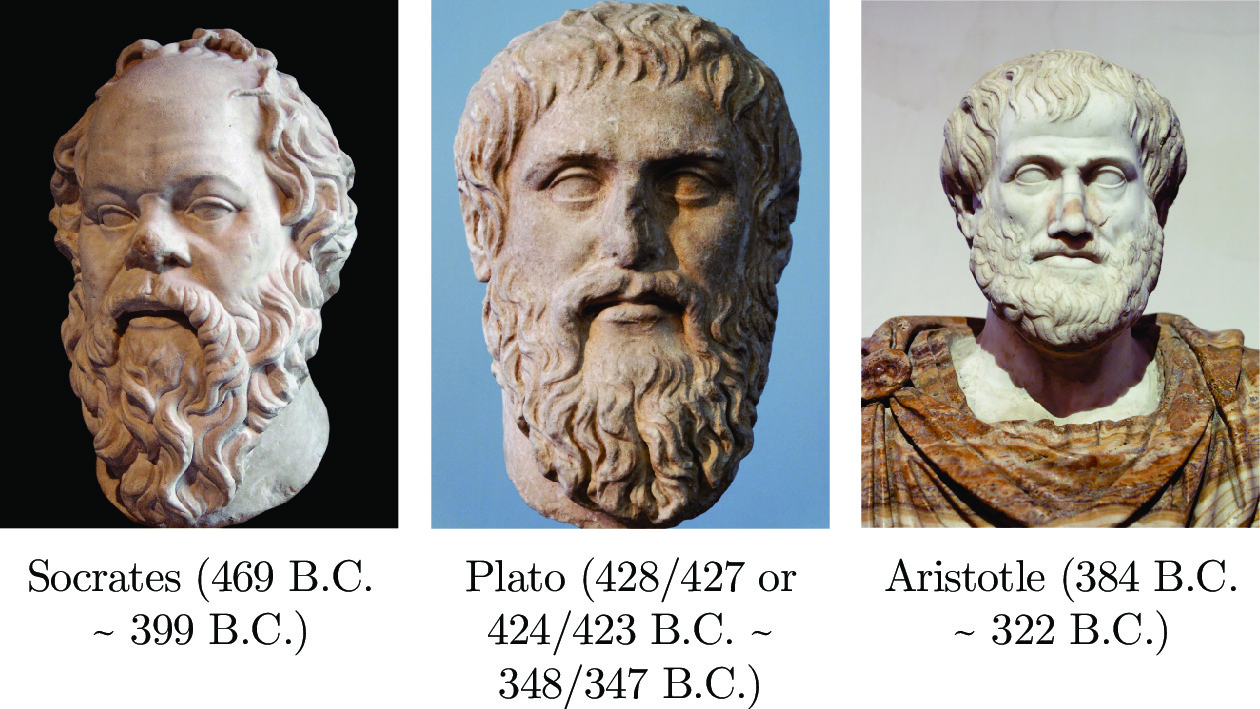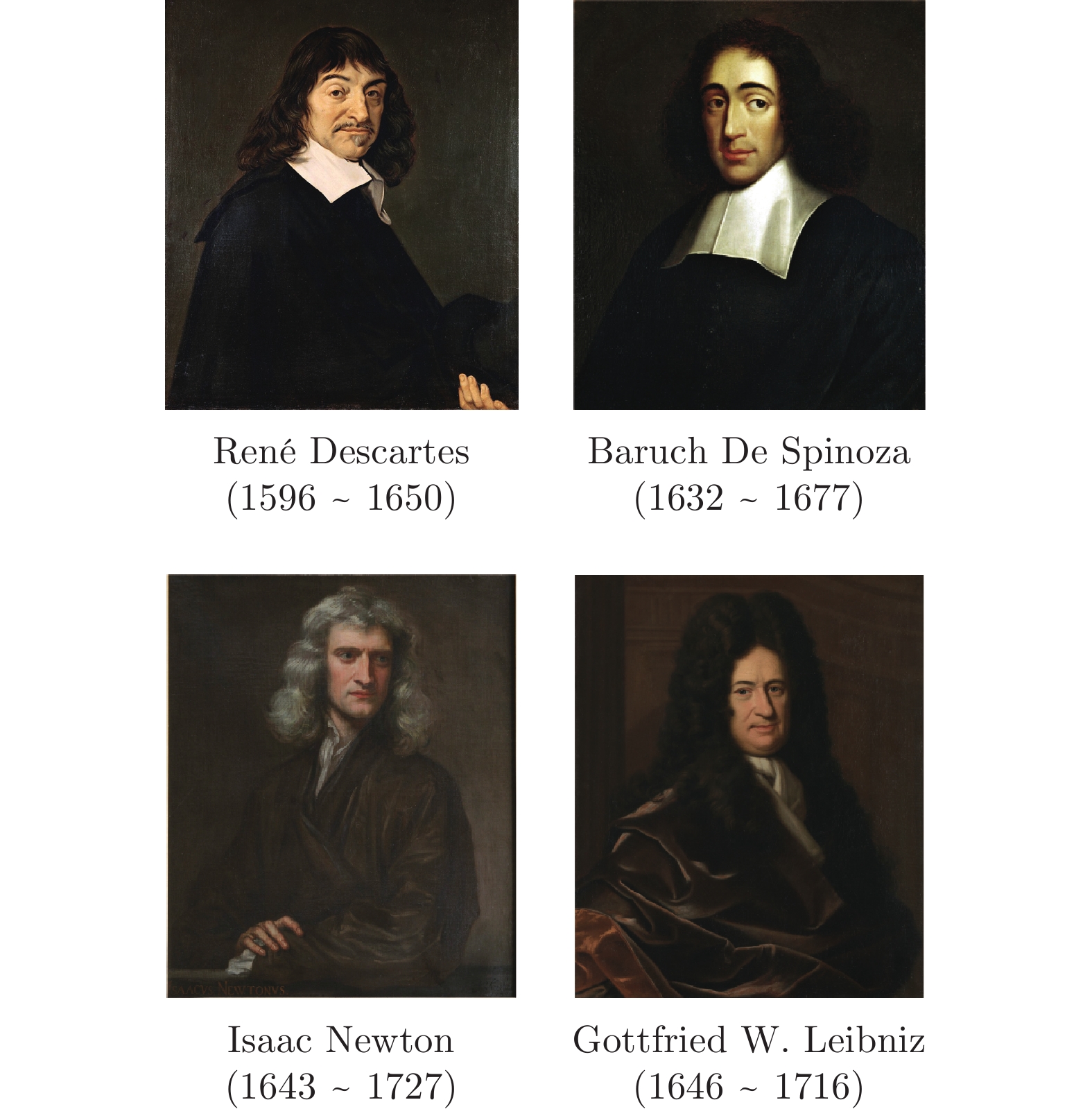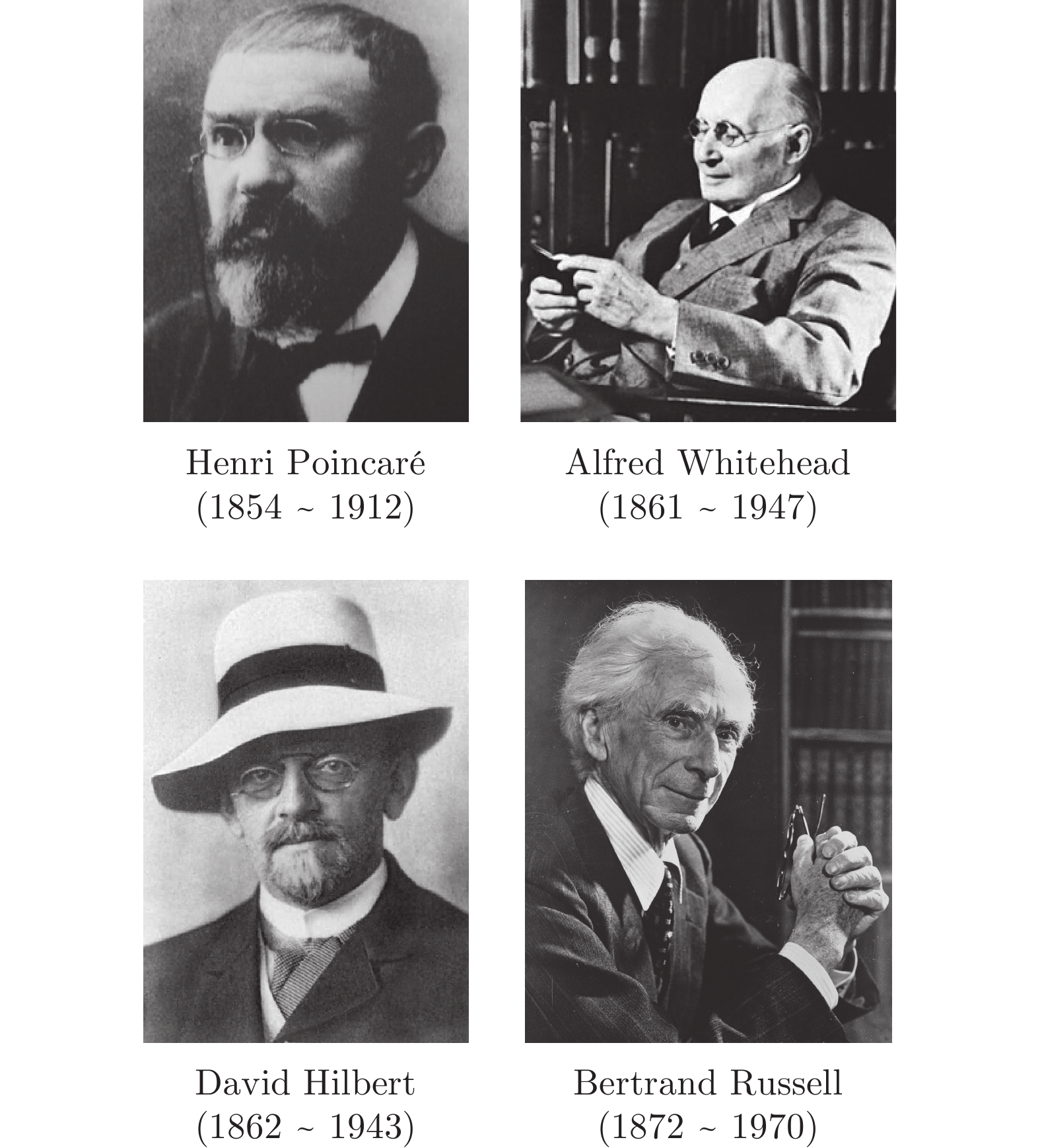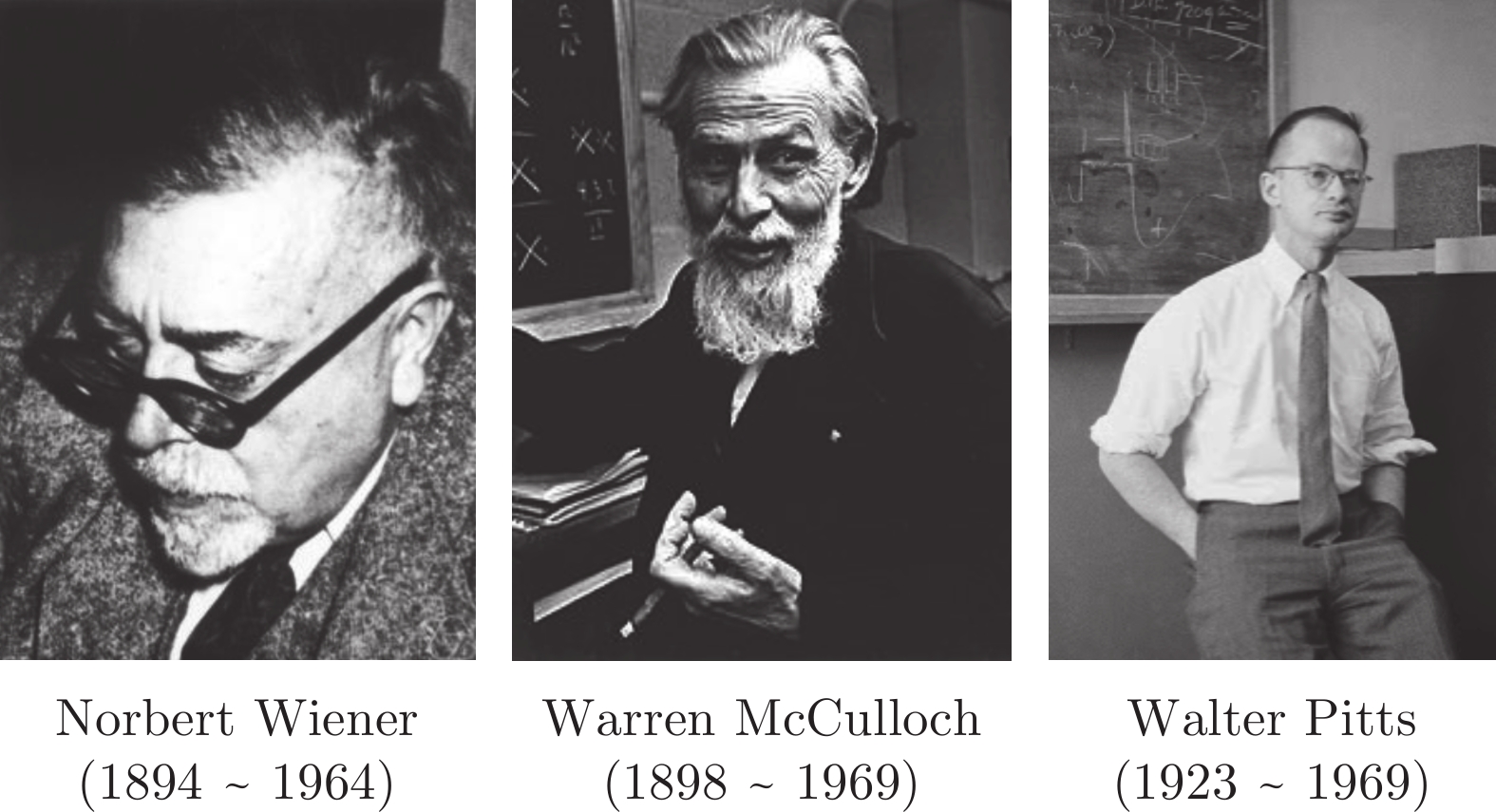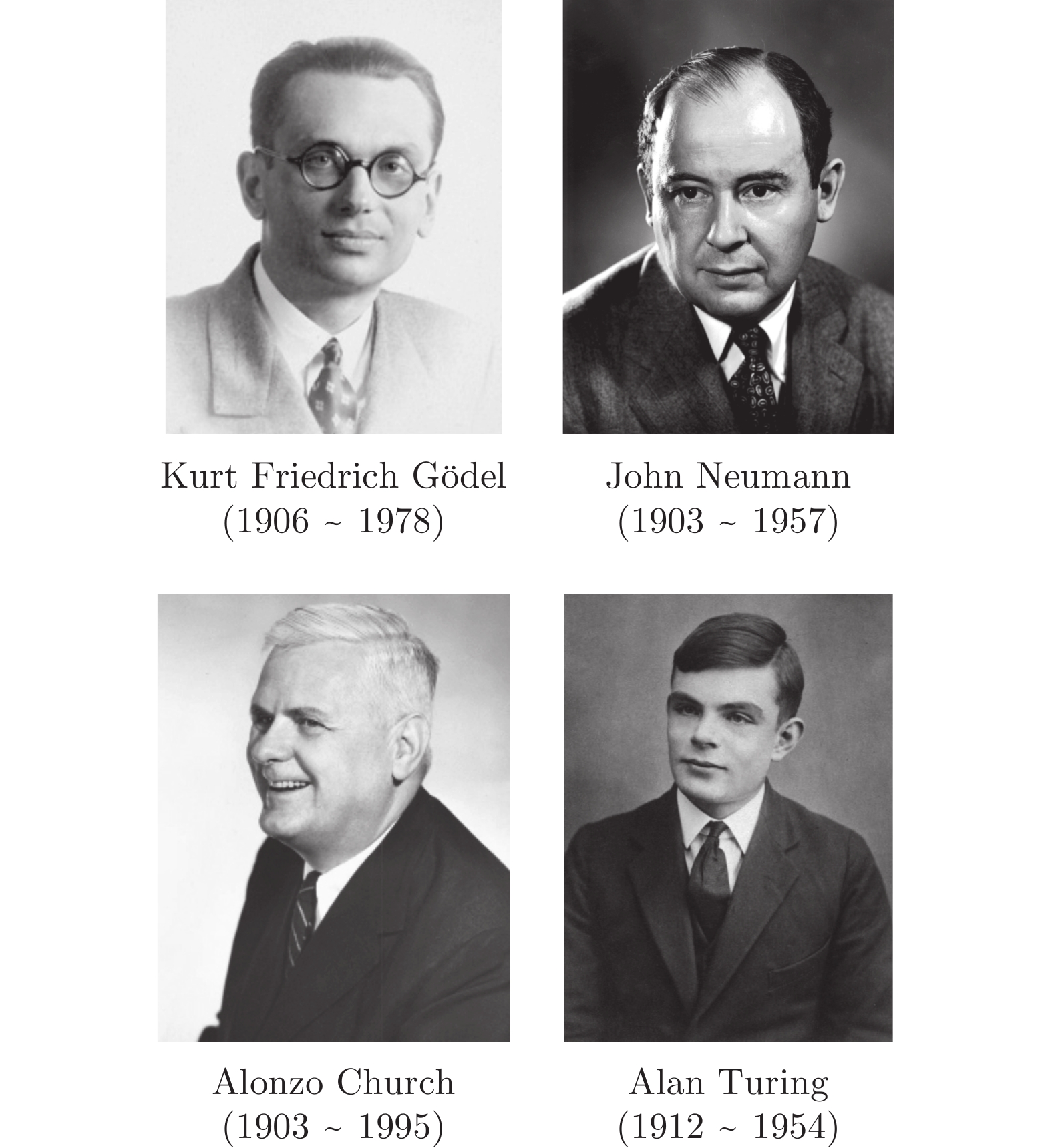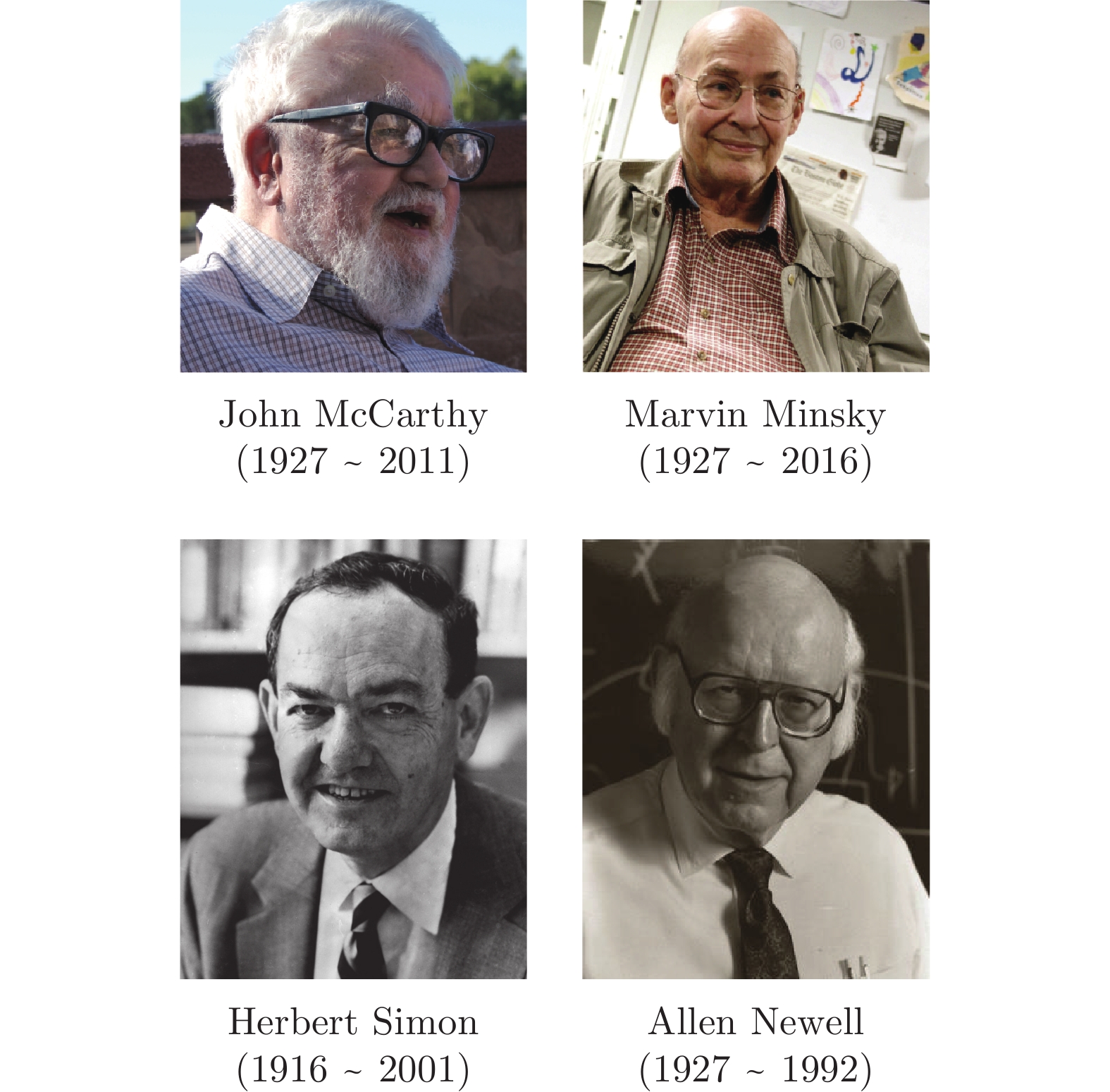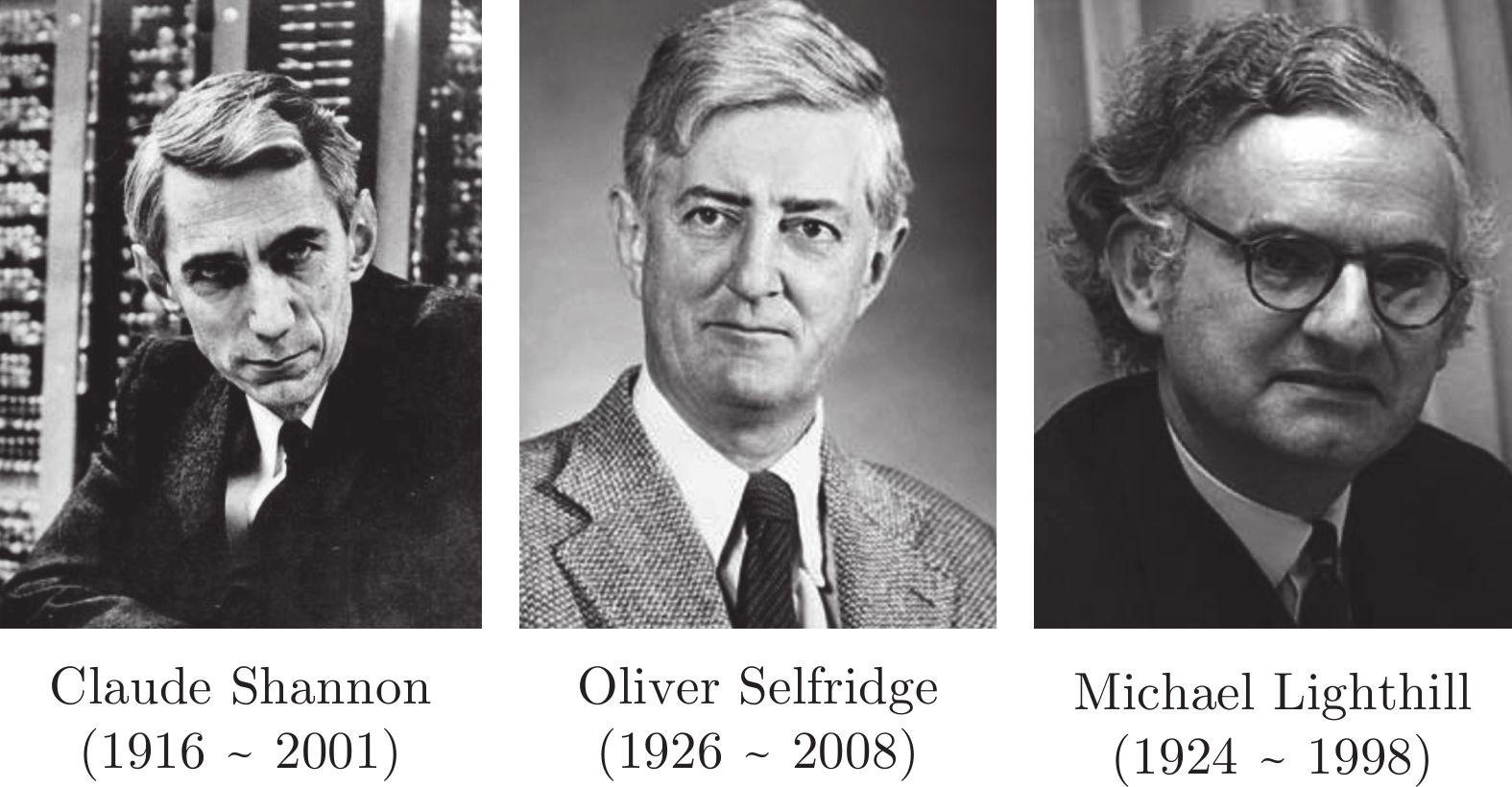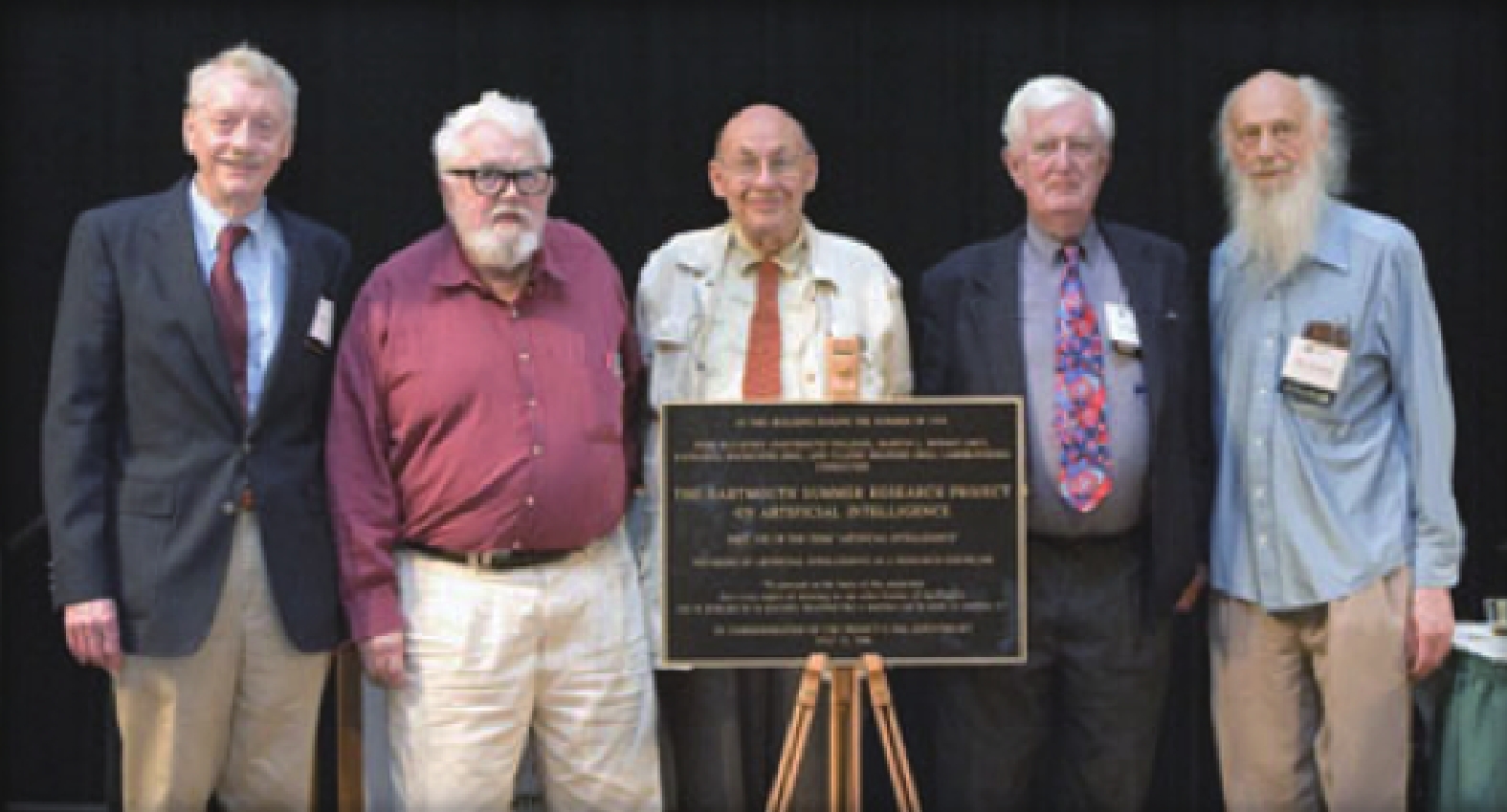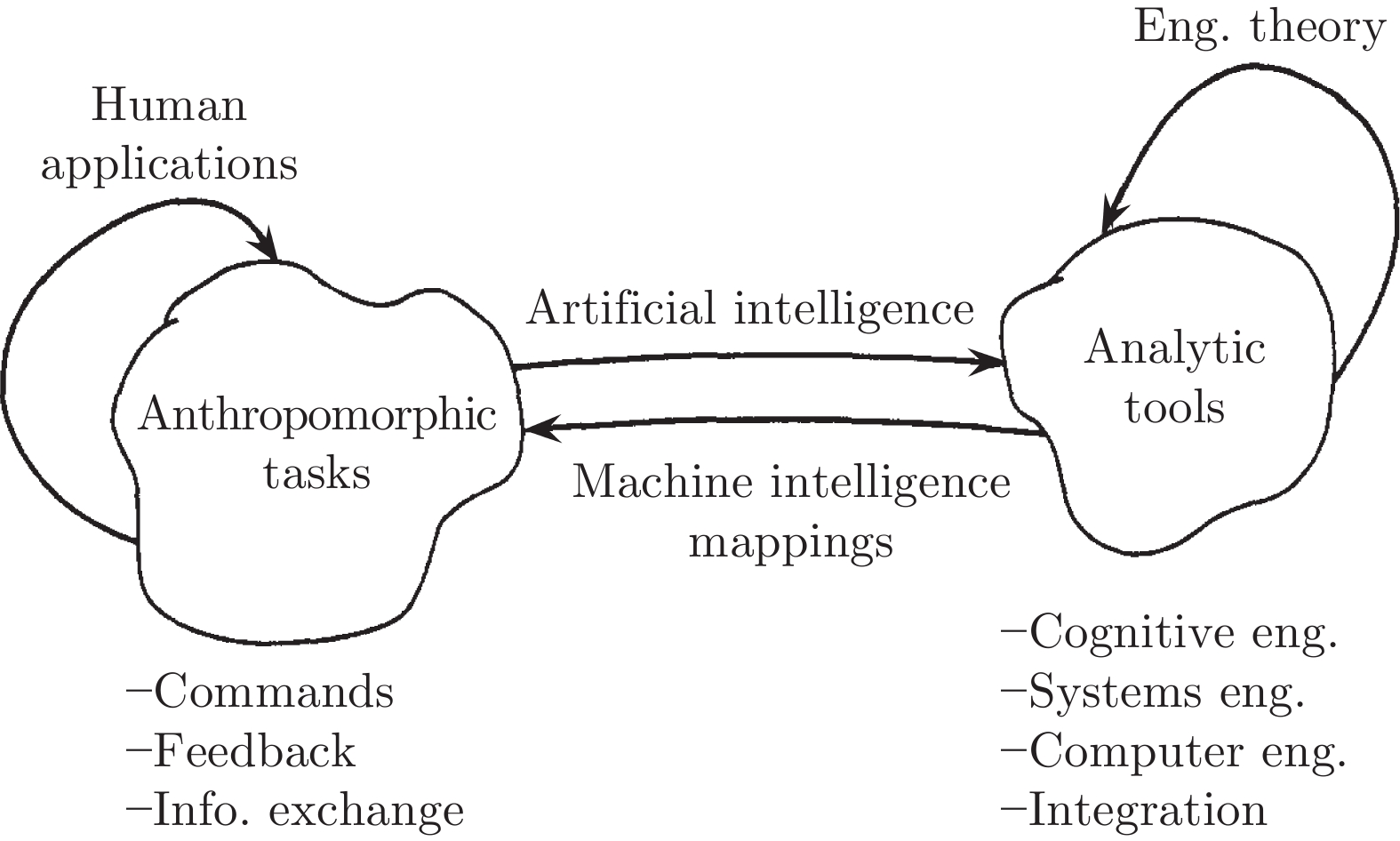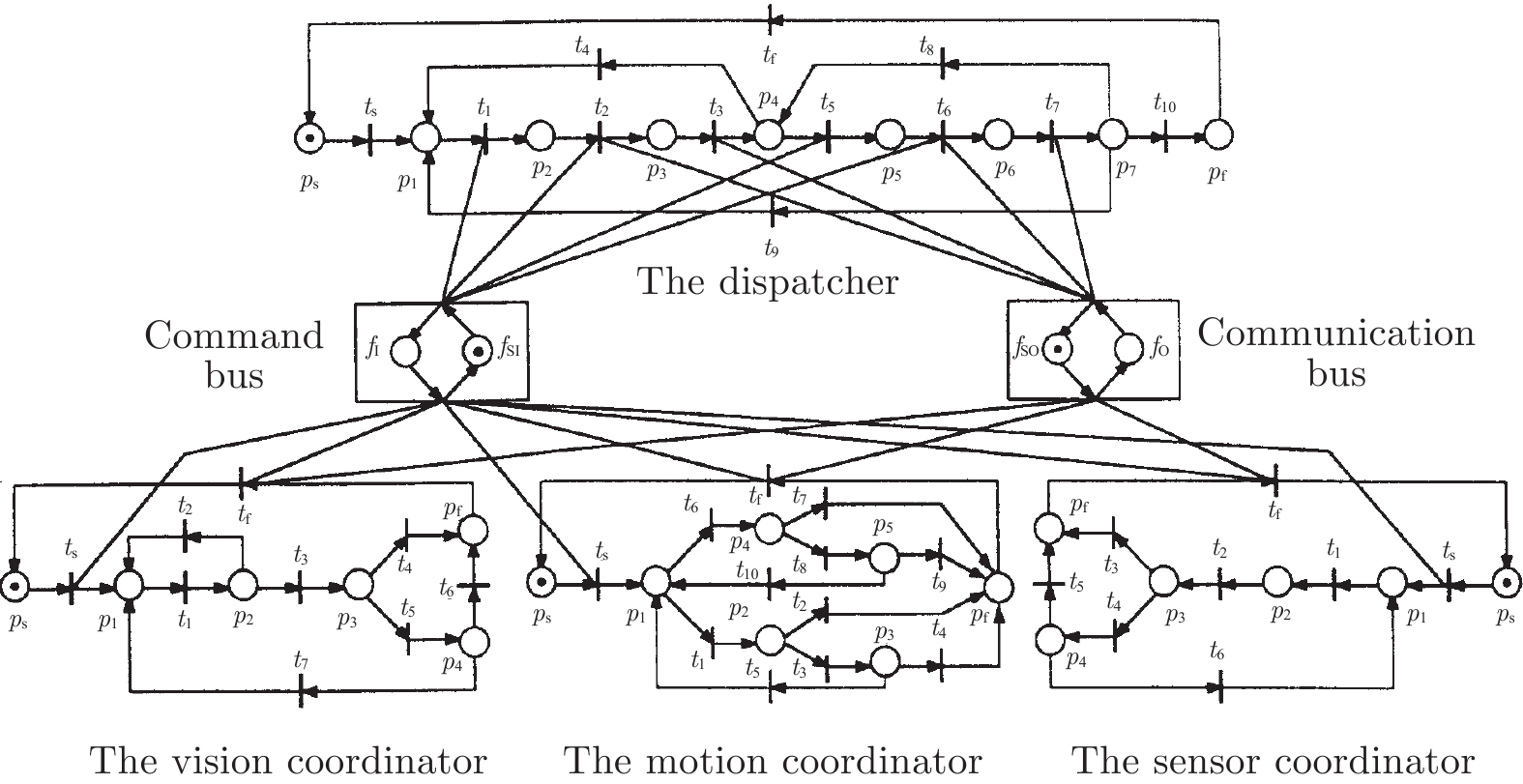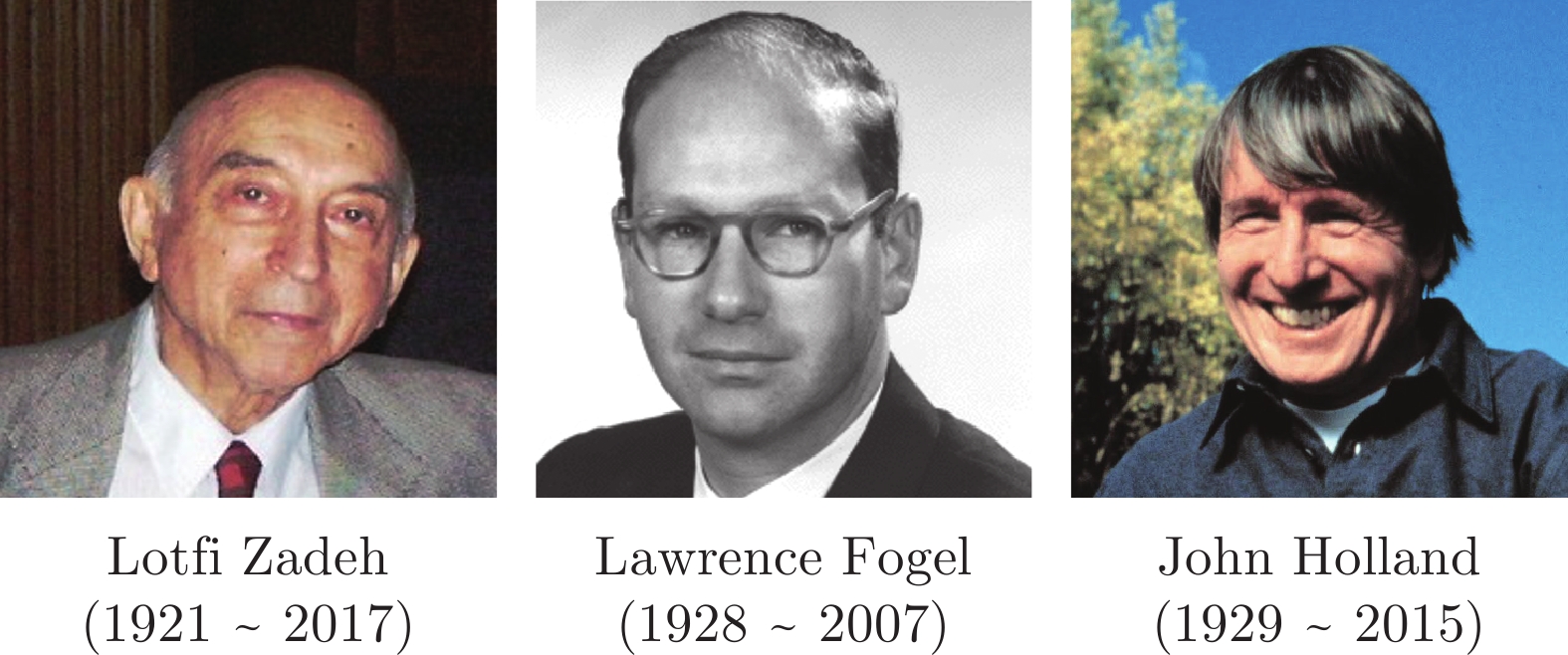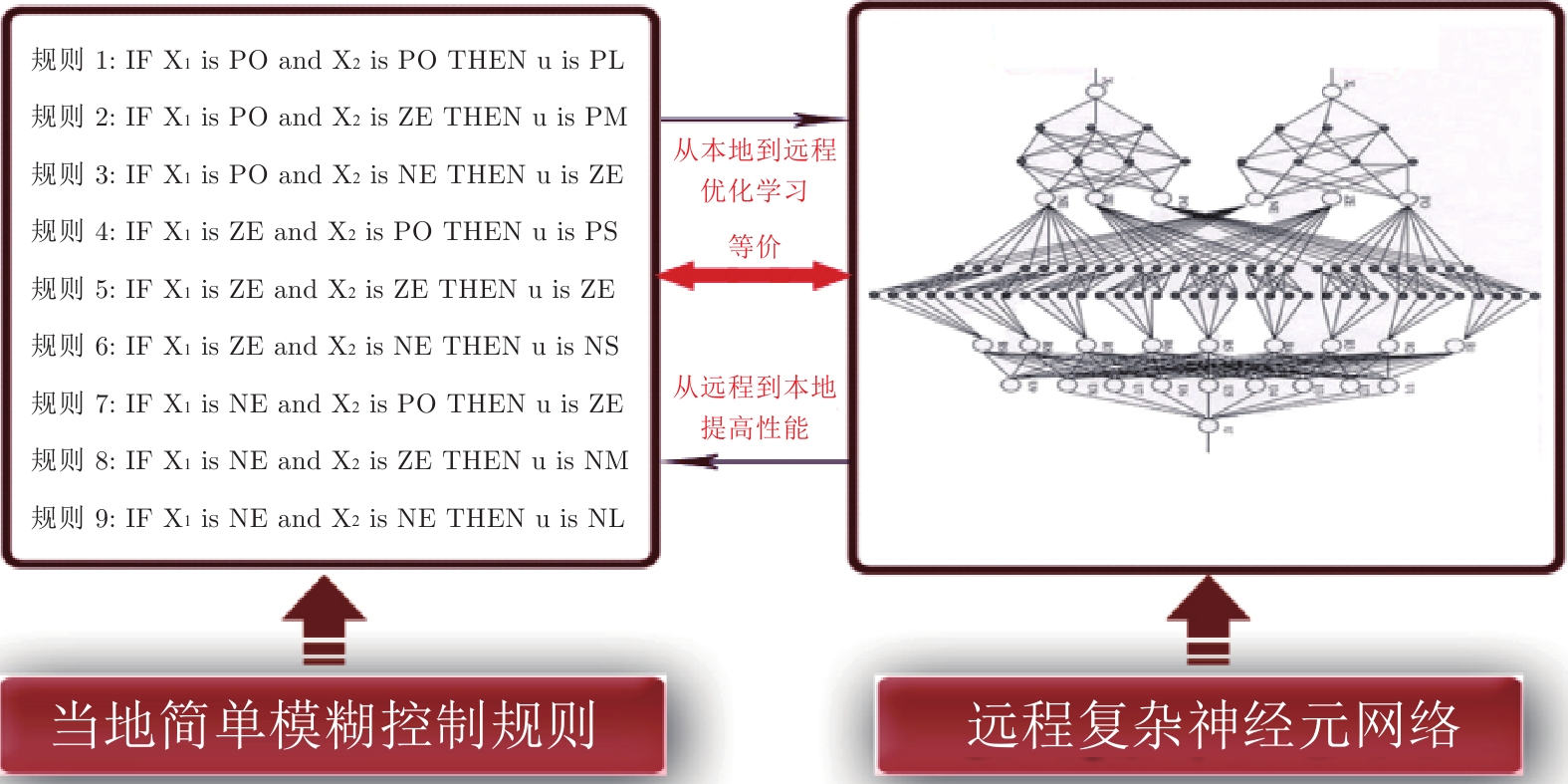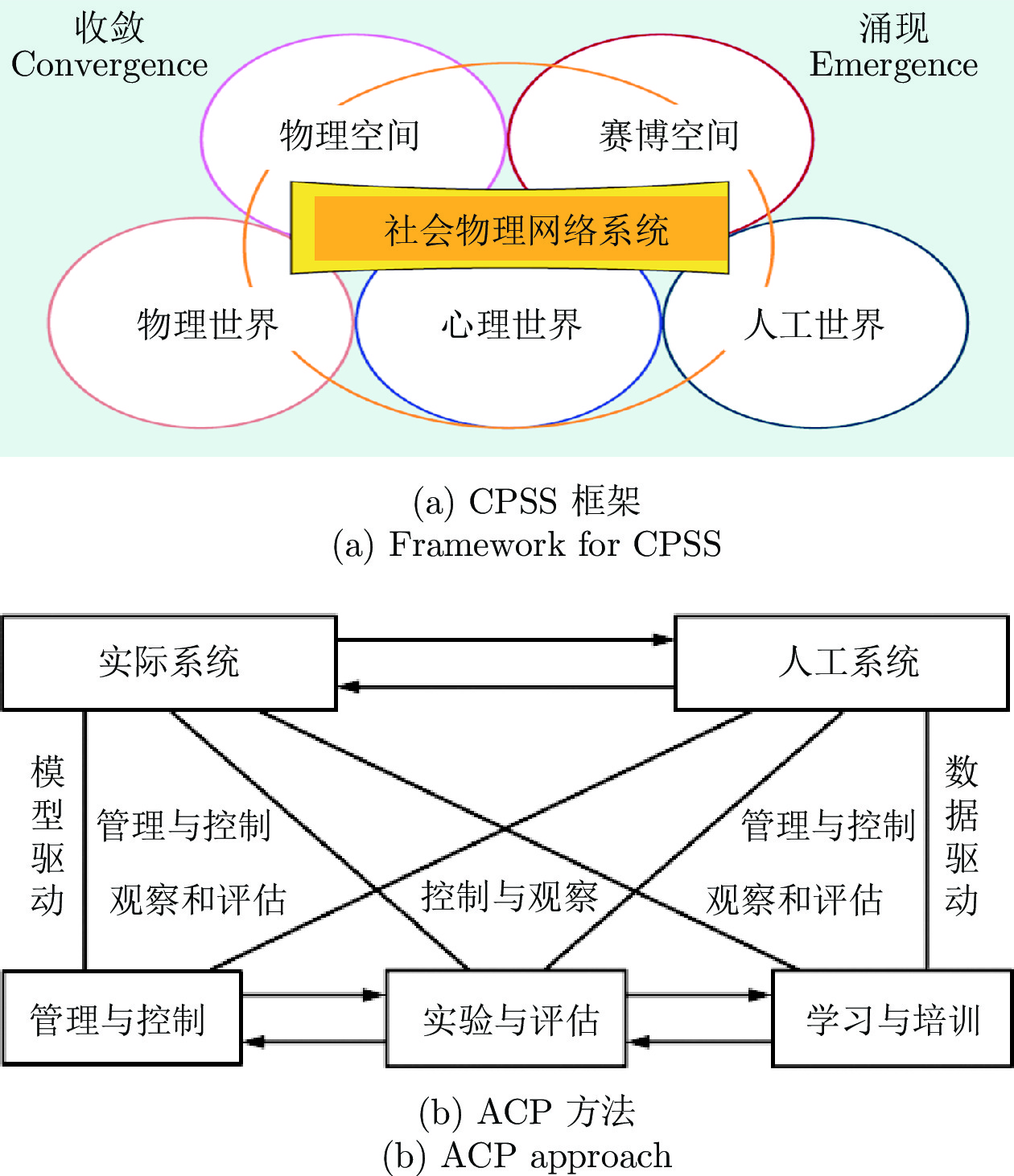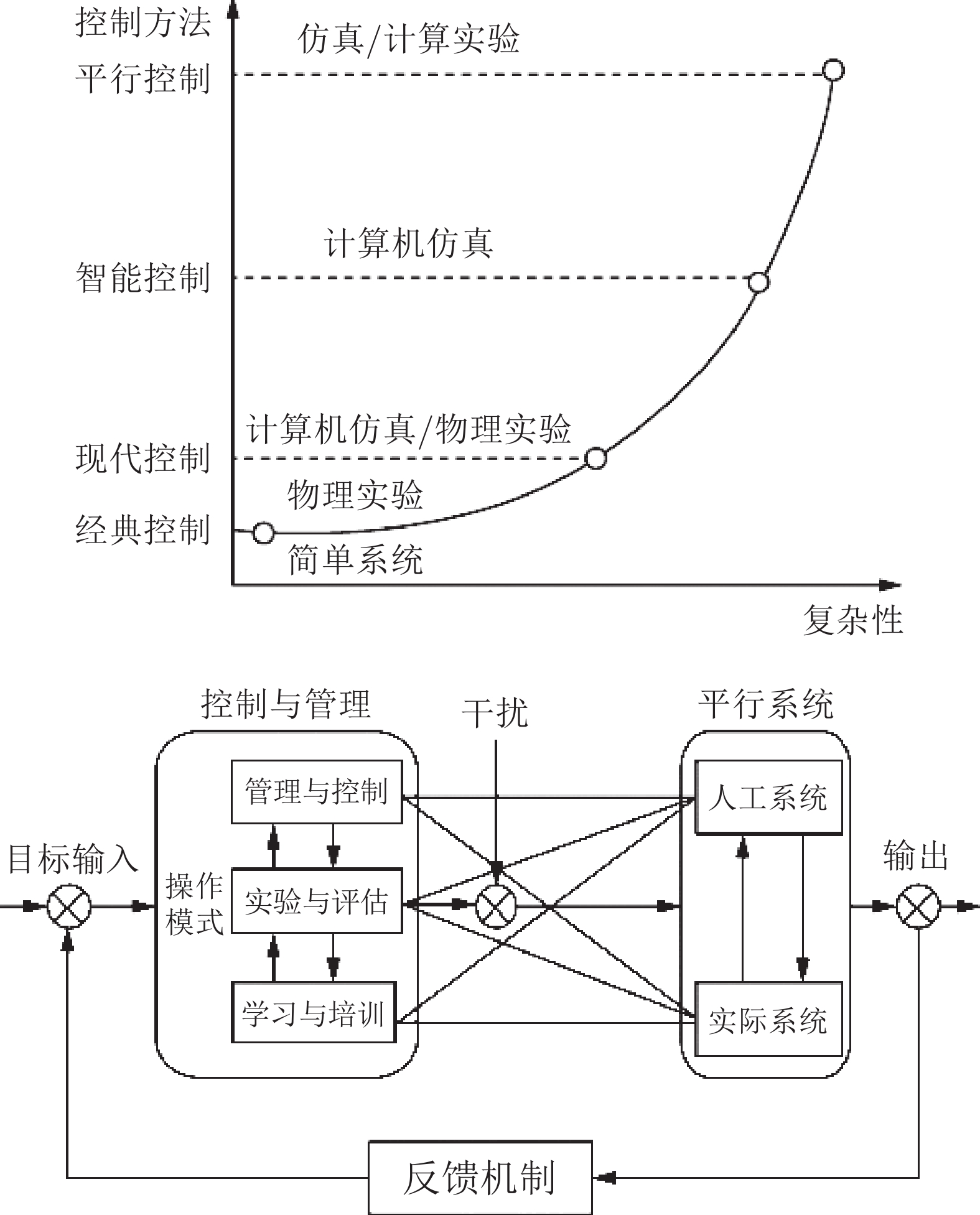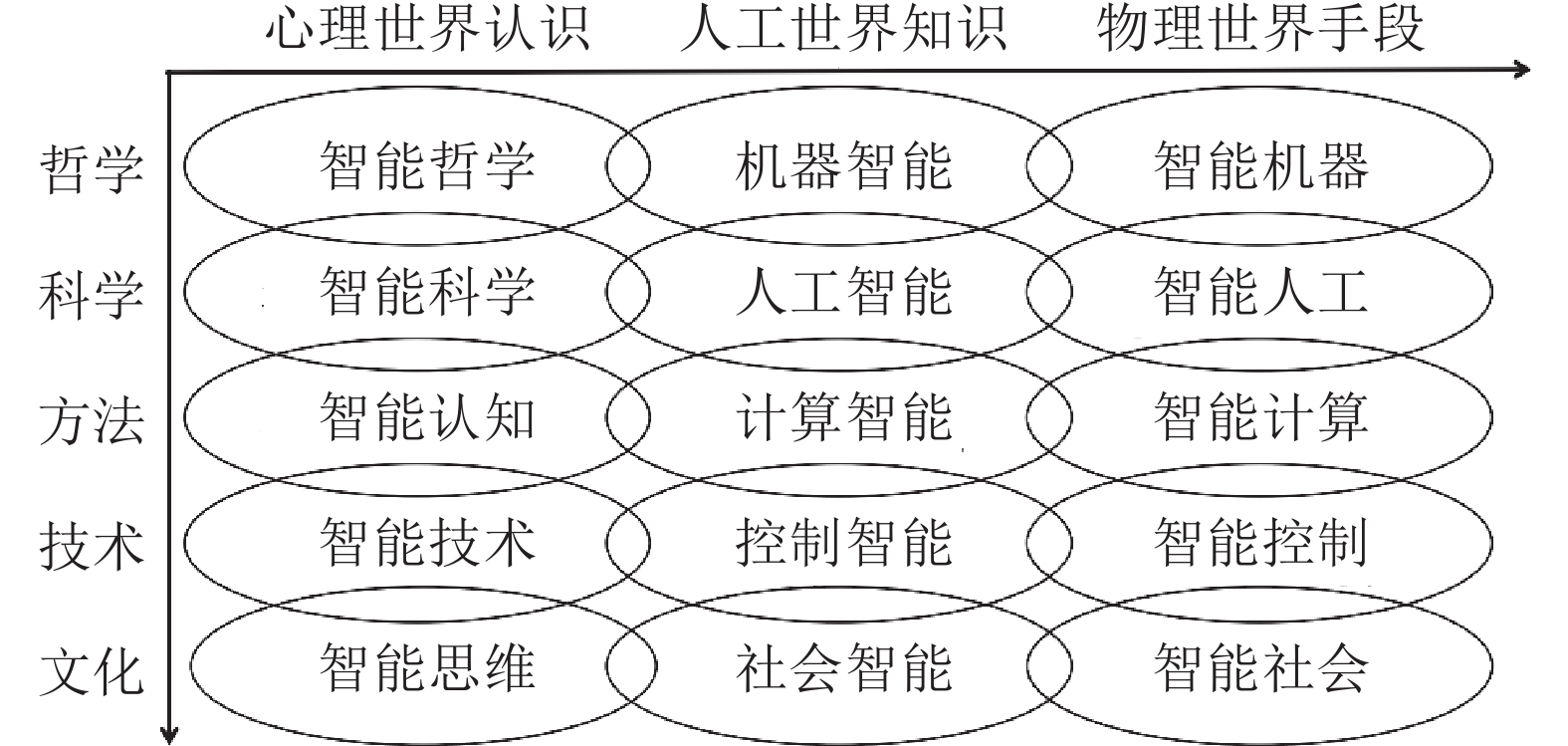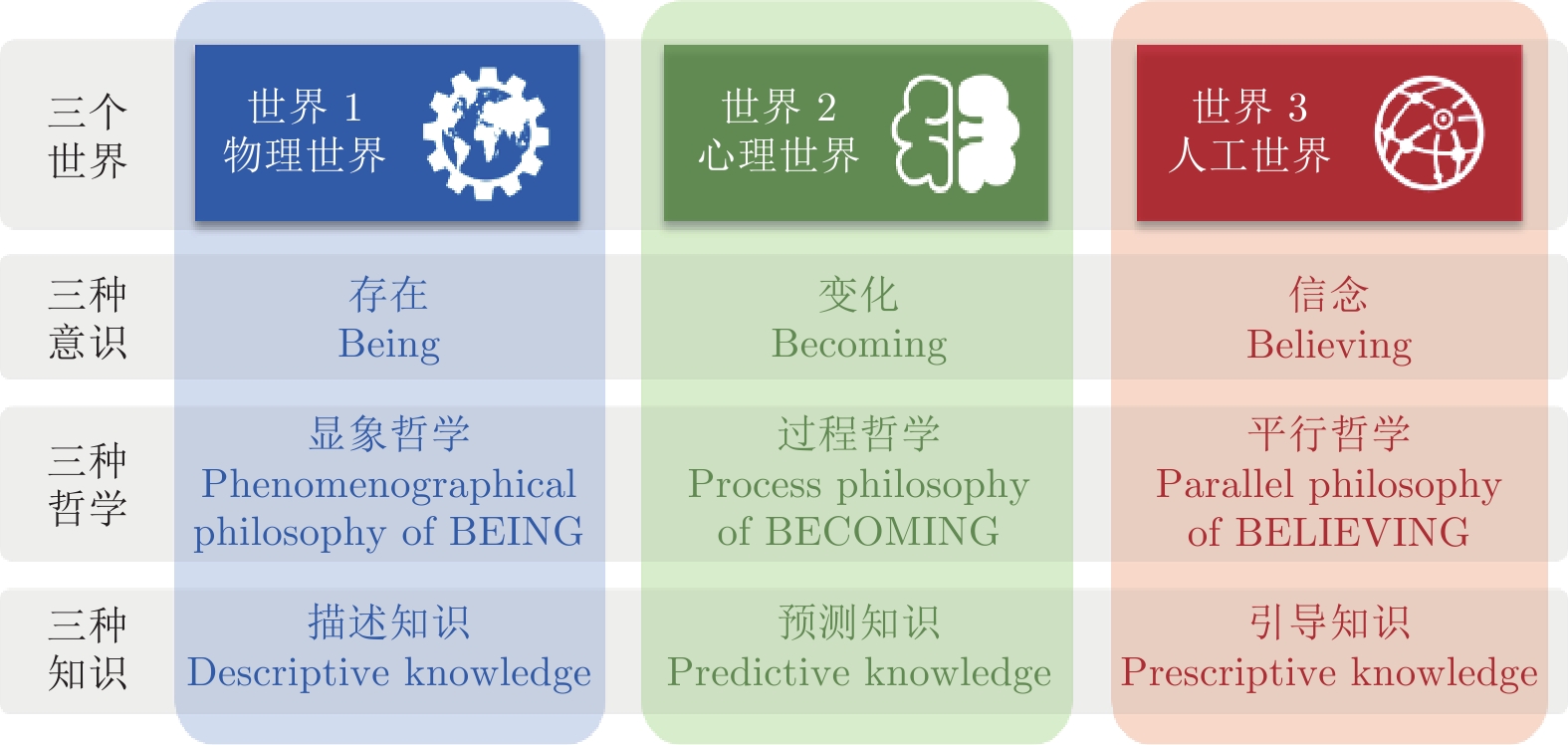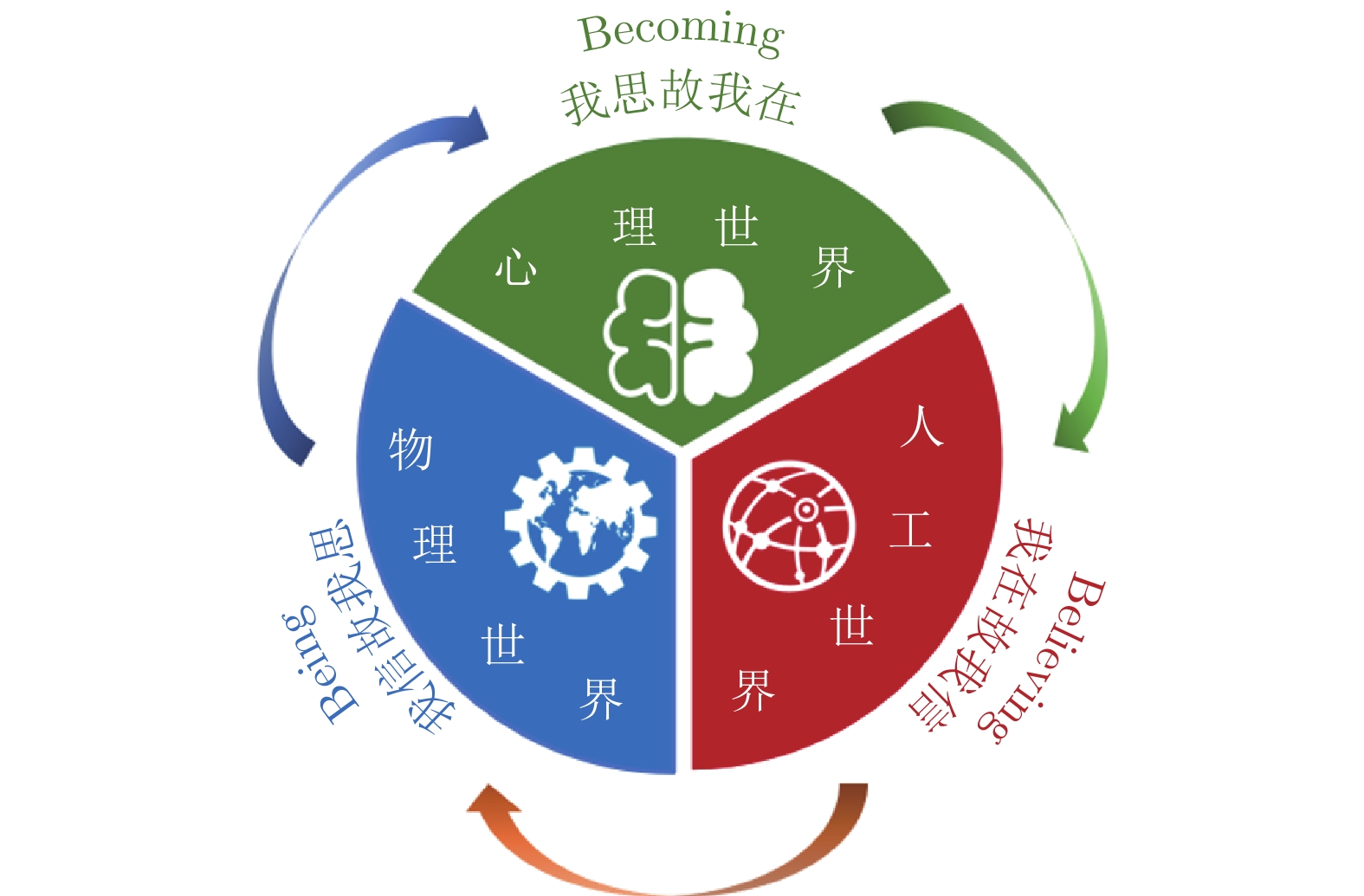|
[1]
|
Fu K S. Learning control systems-review and outlook. IEEE Transactions on Automatic Control, 1970, 15(2): 210-221 doi: 10.1109/TAC.1970.1099405
|
|
[2]
|
Fu K S. Learning control systems and intelligent control systems: An intersection of artifical intelligence and automatic control. IEEE Transactions on Automatic Control, 1971, 16(1): 70-72 doi: 10.1109/TAC.1971.1099633
|
|
[3]
|
Leondes C T, Mendel J M. Artificial intelligence control. Survey of Cybernetics: A Tribute to Dr. Norbert Wiener. London: Iliffe Books, 1969. 209−228
|
|
[4]
|
Minsky M L, Papert S A. Research on Intelligent Automata, Status Report Ⅱ, Project MAC, MIT, USA, 1967
|
|
[5]
|
Nilsson N J. A mobile automaton: An application of artificial intelligence techniques. In: Proceedings of the 1st International Joint Conference on Artificial Intelligence. Washington, USA: SRI, 1969.
|
|
[6]
|
Rosen C A, Nilsson N J. An intelligent automaton. In: Proceedings of the 1967 IEEE International Convention Record, Part 9. New York, USA: IEEE, 1967.
|
|
[7]
|
Saridis G N, Stephanou H E. Hierarchically intelligent control of a bionic arm. In: Proceedings of the 1975 IEEE Conference on Decision and Control Including the 14th Symposium on Adaptive Processes. Houston, USA: IEEE, 1975. 99−104
|
|
[8]
|
Saridis G N. Self-organizing Control of Stochastic Systems. New York: Marcel Dekker, 1977.
|
|
[9]
|
Saridis G N. Toward the realization of intelligent controls. Proceedings of the IEEE, 1979, 67(8): 1115-1133 doi: 10.1109/PROC.1979.11407
|
|
[10]
|
Saridis G N, Lee G C S, Graham J. An integrated syntactic approach and suboptimal control for manipulators and prosthetic arms. In: Proceedings of the 18th IEEE Conference on Decision and Control Including the Symposium on Adaptive Processes. Fort Lauderdale, USA: IEEE, 1979. 257−262
|
|
[11]
|
Saridis G, Lee C S G. Computer-controlled manipulator with visual inputs. In: Proceedings of the 1979 Image Understanding Systems and Industrial Applications I. San Diego, USA: SPIE, 1979.
|
|
[12]
|
Saridis G N, Stephanou H E. A hierarchical approach to the control of a prosthetic arm. IEEE Transactions on Systems, Man, and Cybernetics, 1977, 7(6): 407-420 doi: 10.1109/TSMC.1977.4309737
|
|
[13]
|
Wang F Y, Saridis G N. A Coordination Model for Intelligent Machines, NASA Report, USA, 1988
|
|
[14]
|
Wang F Y, Saridis G N. A model for coordination of intelligent machines using petri nets. In: Proceedings of the 1988 IEEE International Symposium on Intelligent Control. Arlington, USA: IEEE, 1988. 28−33
|
|
[15]
|
Wang F Y, Saridis G N. A coordination theory for intelligent machines. Automatica, 1990, 26(5): 833-844 doi: 10.1016/0005-1098(90)90001-X
|
|
[16]
|
王飞跃, 魏庆来. 智能控制: 从学习控制到平行控制. 控制理论与应用, 2018, 35(7): 939-948 doi: 10.7641/CTA.2018.80325Wang Fei-Yue, Wei Qing-Lai. Intelligent control: From learning control to parallel control. Control Theory & Applications, 2018, 35(7): 939-948 doi: 10.7641/CTA.2018.80325
|
|
[17]
|
王飞跃, 陈俊龙. 智能控制方法与应用. 北京: 中国科学技术出版社, 2020.Wang Fei-Yue, Chen Jun-Long. Intelligent Control Method and Application. Beijing: China Science and Technology Press, 2020.
|
|
[18]
|
Goodfellow I, Bengio Y, Courville A. Deep Learning. Cambridge, MA: MIT Press, 2016.
|
|
[19]
|
Feng S, Chen C L P. Broad learning system for control of nonlinear dynamic systems. In: Proceedings of the 2018 IEEE International Conference on Systems, Man, and Cybernetics (SMC). Miyazaki, Japan: IEEE, 2018. 2230−2235
|
|
[20]
|
王坤峰, 苟超, 段艳杰, 林懿伦, 郑心湖, 王飞跃. 生成式对抗网络GAN的研究进展与展望. 自动化学报, 2017, 43(3): 321-332Wang Kun-Feng, Gou Chao, Duan Yan-Jie, Lin Yi-Lun, Zheng Xin-Hu, Wang Fei-Yue. Generative adversarial networks: The state of the art and beyond. Acta Automatica Sinica, 2017, 43(3): 321-332
|
|
[21]
|
Wang K F, Gou C, Duan Y J, Lin Y L, Zheng X H, Wang F Y. Generative adversarial networks: Introduction and outlook. IEEE/CAA Journal of Automatica Sinica, 2017, 4(4): 588-598 doi: 10.1109/JAS.2017.7510583
|
|
[22]
|
Li L, Lin Y L, Zheng N N, Wang F Y. Parallel learning: A perspective and a framework. IEEE/CAA Journal of Automatica Sinica, 2017, 4(3): 389-395 doi: 10.1109/JAS.2017.7510493
|
|
[23]
|
李力, 林懿伦, 曹东璞, 郑南宁, 王飞跃. 平行学习-机器学习的一个新型理论框架. 自动化学报, 2017, 43(1): 1-8Li Li, Lin Yi-Lun, Cao Dong-Pu, Zheng Nan-Ning, Wang Fei-Yue. Parallel learning-a new framework for machine learning. Acta Automatica Sinica, 2017, 43(1): 1-8
|
|
[24]
|
Zheng N N, Liu Z Y, Ren P J, Ma Y Q, Chen S T, Yu S Y, et al. Hybrid-augmented intelligence: Collaboration and cognition. Frontiers of Information Technology & Electronic Engineering, 2017, 18(2): 153-179
|
|
[25]
|
王飞跃. 智能科技与新轴心时代: 未来的起源与目标. 后机器时代. 北京: 中信出版集团, 2018. 3−17Wang Fei-Yue. Intelligent technology and the new axis era: The origin and goal of future. Post-machine Area. Beijing: CITIC Press Group, 2018. 3−17
|
|
[26]
|
王飞跃. 新 IT 与新轴心时代: 未来的起源和目标. 探索与争鸣, 2017(10): 23−27Wang Fei-Yue. The new IT and axis era: The origin and goal of the future. Exploration and Free Views, 2017(10): 23−27
|
|
[27]
|
王飞跃. 平行哲学与智能科学: 从莱布尼茨的Monad到区块链之DAO. 模式识别与人工智能, 2020, 33(12): 1055-1065Wang Fei-Yue. Parallel philosophy and intelligent science: From Leibniz's monad to Blockchain's DAO. Pattern Recognition and Artificial Intelligence, 2020, 33(12): 1055-1065
|
|
[28]
|
王飞跃. 平行哲学: 智能产业与智慧经济的本源及其目标. 中国科学院院刊, 2021, 36(3): 308-318Wang Fei-Yue. Parallel philosophy: Origin and goal of intelligent industries and smart economics. Bulletin of the Chinese Academy of Sciences, 2021, 36(3): 308-318
|
|
[29]
|
王飞跃. 平行哲学与智能技术: 平行产业与智慧社会的对偶方程与测试基础. 智能科学与技术学报, 2021. (查阅所有网上资料, 未找到本条文献信息, 请联系作者确认)Wang Fei-Yue. Parallel philosophy and intelligent technology: Dual equations and testing systems for parallel industries and smart societies. Chinese Journal of Intelligent Science and Technology, 2021.
|
|
[30]
|
罗素 [著], 马元德 [译]. 西方哲学史. 北京: 商务印书馆, 2011.Russell Bertrand [Author], Ma Yuan-De [Translator]. The History of Western Philosophy. Beijing: The Commercial Press, 2011.
|
|
[31]
|
贺麟. 现代西方哲学讲演集. 上海: 上海人民出版社, 2012.He Lin. Lectures on Modern Western Philosophy. Shanghai: Shanghai People's Publishing House, 2012.
|
|
[32]
|
Wang F Y. Artificial intelligence hall of fame. In: The 2016 Memory and Celebration, AI World 2016. Beijing, China: 2016
|
|
[33]
|
王飞跃. 人工智能名人堂: 纪念与欢庆. 中国计算机学会通讯, 2017, 13(3): 62-66Wang Fei-Yue. AI hall of fame: In memory and celebration. Communications of the CCF, 2017, 13(3): 62-66 (查阅所有网上资料, 未找到对应的英文翻译, 请联系作者确认)
|
|
[34]
|
王飞跃. 维纳的悲剧: 时代的叛徒, 未来的使者. 知识分子, 2021. (查阅所有网上资料, 未找到本条文献信息, 请联系作者确认)Wang Fei-Yue. The tragedy of wiener: The traitor of the era, the messenger of the future. The Intellectual, 2021.
|
|
[35]
|
Rosenblueth A, Wiener N, Bigelow J. Behavior, purpose and teleology. Philosophy of Science, 1943, 10(1): 18-24 doi: 10.1086/286788
|
|
[36]
|
McCulloch W S, Pitts W. A logical calculus of the ideas immanent in nervous activity. The Bulletin of Mathematical Biophysics, 1943, 5(4): 115-133 doi: 10.1007/BF02478259
|
|
[37]
|
Wang F Y, Zhang J J, Zheng X H, Wang X, Yuan Y, Dai X X, et al. Where does AlphaGo go: From church-turing thesis to AlphaGo thesis and beyond. IEEE/CAA Journal of Automatica Sinica, 2016, 3(2): 113-120 doi: 10.1109/JAS.2016.7471613
|
|
[38]
|
Gödel K. Über formal unentscheidbare Sätze der Principia Mathematica und verwandter Systeme I. Monatshefte für Mathematik und Physik, 1931, 38(1): 173-198
|
|
[39]
|
Turing A M. On computable numbers, with an application to the entscheidungsproblem. Proceedings of the London Mathematical Society, 1937, s2-42(1): 230-265 doi: 10.1112/plms/s2-42.1.230
|
|
[40]
|
Church A. An unsolvable problem of elementary number theory. American Journal of Mathematics, 1936, 58(2): 345-363 doi: 10.2307/2371045
|
|
[41]
|
弗洛·康韦, 吉姆·西格尔曼 [著], 张国庆 [译]. 维纳传: 信息时代的隐秘英雄. 北京: 中信出版社, 2021.Convay Flo, Siegelman Jim [Author], Zhang Guo-Qing [Translator]. Dark Hero of the Information Age: In Search of Norbert Wiener, the Father of Cybernetics. Beijing: CITIC Press, 2021.
|
|
[42]
|
Minsky M L. Theory of Neural-analog Reinforcement Systems and its Application to the Brain-model Problem [Ph. D. dissertation], Princeton University, USA, 1954
|
|
[43]
|
Minsky M. The Society of Mind. New York: Simon & Schuster, 1986.
|
|
[44]
|
王飞跃. 建立人工智能的数学体系——介绍《Logical Foundations of Artificial Intelligence》. 计算机科学, 1989(2): 77−78Wang Fei-Yue. Establish a mathematical system for artificial intelligence—An introduction to Logical Foundations of Artificial Intelligence. Computer Science, 1989(2): 77−78
|
|
[45]
|
王飞跃. 科学与信念. 高科技与产业化, 2017(4): 18−20Wang Fei-Yue. Understanding beliefs. High-Technology & Industrialization, 2017(4): 18−20
|
|
[46]
|
尼尔斯·尼尔森 [著], 王飞跃, 赵学亮 [译]. 理解信念: 人工智能的科学理解. 北京: 机械工业出版社, 2017.Nilsson Nils John [Author], Wang Fei-Yue, Zhao Xue-Liang [Translator]. Understanding Beliefs. Beijing: China Machine Press, 2017.
|
|
[47]
|
Saridis G N, Valavanis K P. Analytical design of intelligent machines. Automatica, 1988, 24(2): 123-133 doi: 10.1016/0005-1098(88)90022-2
|
|
[48]
|
Wang F Y, Saridis G N. Task translation and integration specification in intelligent machines. IEEE Transactions on Robotics and Automation, 1993, 9(3): 257-271 doi: 10.1109/70.240195
|
|
[49]
|
罗公亮, 秦世引. 智能控制导论. 杭州: 浙江科学技术出版社, 1997.Luo Gong-Liang, Qin Shi-Yin. An Introduction to Intelligent Controls. Hangzhou: Zhejiang Science and Technology Publishing House, 1997.
|
|
[50]
|
辛斌, 陈杰, 彭志红. 智能优化控制: 概述与展望. 自动化学报, 2013, 39(11): 1831-1848 doi: 10.3724/SP.J.1004.2013.01831Xin Bin, Chen Jie, Peng Zhi-Hong. Intelligent optimized control: Overview and prospect. Acta Automatica Sinica, 2013, 39(11): 1831-1848 doi: 10.3724/SP.J.1004.2013.01831
|
|
[51]
|
Rosenblatt F. Principles of Neurodynamics: Perceptrons and the Theory of Brain Mechanisms, Technical Report, Cornell Aeronautical Lab Inc., USA, 1961
|
|
[52]
|
Rosenblatt F. The perceptron: A probabilistic model for information storage and organization in the brain. Psychological Review, 1958, 65(6): 386-408 doi: 10.1037/h0042519
|
|
[53]
|
Nilsson N J. Learning Machines: Foundations of Trainable Pattern-classifying Systems. New York: McGraw-Hill, 1965.
|
|
[54]
|
Widrow B, Lehr M A. 30 years of adaptive neural networks: Perceptron, Madaline, and backpropagation. Proceedings of the IEEE, 1990, 78(9): 1415-1442 doi: 10.1109/5.58323
|
|
[55]
|
Wang F Y. A Coordination Theory of Intelligent Machines [Ph. D. dissertation], RPI, Troy, USA, 1990
|
|
[56]
|
Wang F Y. Building knowledge structure in neural nets using fuzzy logic. Robotics and Manufacturing: Recent Trends in Research, Education and Applications. New York: American Society of Mechanical Engineers Press, 1992. 361−369
|
|
[57]
|
Wang F Y, Liu D R. Advances in Computational Intelligence: Theory and Applications. New Jersey: World Scientific, 2006.
|
|
[58]
|
王飞跃, 吴朝晖. ASOS: 嵌入式操作系统的发展趋势. 计算机世界, 2000-11-20(B02)Wang Fei-Yue, Wu Zhao-Hui. ASOS: The development trend of embedded system. Computer World, 2000-11-20(B02)
|
|
[59]
|
王飞跃, 赖关丕, 艾云峰, 李乐飞, 黄锋. 嵌入式系统的组织与设计——基本方法与应用. 菲蒙: 西潮出版社, 2005.Wang Fei-Yue, Lai Guan-Pei, Ai Yun-Feng, Li Le-Fei, Huang Feng. Design and Organization of Embedded Systems: Methods and Applications. Fremont: Westing Publishing, 2005.
|
|
[60]
|
Wang F Y, Zhang H G, Liu D R. Adaptive dynamic programming: An introduction. IEEE Computational Intelligence Magazine, 2009, 4(2): 39-47 doi: 10.1109/MCI.2009.932261
|
|
[61]
|
王飞跃, 王成红. 基于网络控制的若干基本问题的思考和分析. 自动化学报, 2002, 28(S1): 171-176Wang Fei-Yue, Wang Cheng-Hong. On some basic issues in network-based direct control systems. Acta Automatica Sinica, 2002, 28(S1): 171-176
|
|
[62]
|
Wang F Y. ABCS: Agent-based Control Systems, SIE Working Paper, University of Arizona, USA, 1998
|
|
[63]
|
Wang F Y. ADCS: Agent-based Distributed Control Systems, PARCS Technical Report, University of Arizona, USA, 1999
|
|
[64]
|
Wu Q L, Wang F Y, Lin Y T. A mobile-agent based distributed intelligent control system architecture for home automation. In: Proceedings of the 2001 IEEE International Conference on Systems, Man and Cybernetics. Tucson, USA: IEEE, 2001. 1599−1605
|
|
[65]
|
Wang F Y. Agent-based control for fuzzy behavior programming in robotic excavation. IEEE Transactions on Fuzzy Systems, 2004, 12(4): 540-548 doi: 10.1109/TFUZZ.2004.832522
|
|
[66]
|
Wang F Y. Modeling, analysis and synthesis of linguistic dynamic systems: A computational theory. In: Proceedings of the 1995 IEEE International Workshop on Architecture for Semiotic Modeling and Situation Control in Large Complex Systems. Monterey, USA: IEEE, 1995. 173−178
|
|
[67]
|
Wang F Y, Kim H M. Implementing adaptive fuzzy logic controllers with neural networks: A design paradigm. Journal of Intelligent and Fuzzy Systems, 1995, 3(2): 165-180 doi: 10.3233/IFS-1995-3206
|
|
[68]
|
Wang F Y. Outline of a computational theory for linguistic dynamic systems: Toward computing with words. International Journal of Intelligent Control and Systems, 1998, 2(2): 211-224
|
|
[69]
|
王飞跃. 词计算和语言动力学系统的基本问题和研究. 自动化学报, 2005, 31(6): 844-852Wang Fei-Yue. Fundamental issues in research of computing with words and linguistic dynamic systems. Acta Automatica Sinica, 2005, 31(6): 844-852
|
|
[70]
|
王飞跃. 词计算和语言动力学系统的计算理论框架. 模式识别与人工智能, 2001, 14(4): 377-384 doi: 10.3969/j.issn.1003-6059.2001.04.001Wang Fei-Yue. Computing with words and a framework for computational linguistic dynamic systems. Pattern Recognition and Artificial Intelligence, 2001, 14(4): 377-384 doi: 10.3969/j.issn.1003-6059.2001.04.001
|
|
[71]
|
莫红, 王飞跃. 基于词计算的语言动力系统及其稳定性. 中国科学F辑: 信息科学, 2009, 39(2): 254-268Mo Hong, Wang Fei-Yue. Linguistic dynamic systems based on computing with words and their stabilities. Science in China Series F: Information Sciences, 2009, 52(5): 780-796
|
|
[72]
|
莫红, 王飞跃. 语言动力系统与二型模糊逻辑. 北京: 中国科学技术出版社, 2013.Mo Hong, Wang Fei-Yue. Linguistic Dynamic Systems and Type-2 Fuzzy Logic. Beijing: China Science Press, 2013.
|
|
[73]
|
王飞跃, 莫红, 赵亮, 李润梅. 二型模糊集合与逻辑. 北京: 清华大学出版社, 2018.Wang Fei-Yue, Mo Hong, Zhao Liang, Li Run-Mei. Type Ⅱ Fuzzy Sets and Logic. Beijing: Tsinghua University Press, 2018.
|
|
[74]
|
Wang F Y, Saridis G N. Suboptimal control for nonlinear stochastic systems. In: Proceedings of the 31st IEEE Conference on Decision and Control. Tucson, USA: IEEE, 1992. 1856−1861
|
|
[75]
|
Saridis G N, Wang F Y. Suboptimal control of nonlinear stochastic systems. Control Theory and Advanced Technology, 1994, 10(4): 847-871
|
|
[76]
|
Wei Q L, Wang F Y, Liu D R, Yang X. Finite-approximation-error-based discrete-time iterative adaptive dynamic programming. IEEE Transactions on Cybernetics, 2014, 44(12): 2820-2833 doi: 10.1109/TCYB.2014.2354377
|
|
[77]
|
Wang F Y, Jin N, Liu D R, Wei Q L. Adaptive dynamic programming for finite-horizon optimal control of discrete-time nonlinear systems with ε-error bound. IEEE Transactions on Neural Networks, 2011, 22(1): 24-36 doi: 10.1109/TNN.2010.2076370
|
|
[78]
|
Liu D R, Wei Q L, Wang D, Yang X, Li H L. Adaptive Dynamic Programming With Applications in Optimal Control. Cham: Springer, 2017.
|
|
[79]
|
Saridis G N. Entropy in Control Engineering. New Jersey: World Scientific, 2001. 1−148
|
|
[80]
|
Saridis G N. Entropy as a Philosophy [Ph. D. dissertation], National Inst. of Standards and Technology (MEL), USA, 2004
|
|
[81]
|
Saridis G N. Analytic formulation of the principle of increasing precision with decreasing intelligence for intelligent machines. Automatica, 1989, 25(3): 461-467 doi: 10.1016/0005-1098(89)90016-2
|
|
[82]
|
Saridis G N. Stochastic Processeses, Estimation and Control—The Entropy Approach. New York: John Wiley and Sons, 1995.
|
|
[83]
|
Wang F Y. Shadow Systems: A New Concept for Nested and Embedded Co-simulation for Intelligent Systems, RAL Technical Report# RAL-11-27-94, NASA/UA Report, SERC, University of Arizona, USA, 1994
|
|
[84]
|
Wang F Y. Modeling and Specification of Complex Economic and Social Systems: Categories, Functors, and Natural Transformations, Technical Report# PARCS-05-03-99, Program for Advanced Research in Complex Systems, University of Arizona, USA, 1999
|
|
[85]
|
Wang F Y. Parallel emergency: Social renormalization via monads and computational social systems. IEEE Transactions on Computational Social Systems, 2020, 7(2): 286-292 doi: 10.1109/TCSS.2020.2982026
|
|
[86]
|
王飞跃. 复杂经济社会系统分析与管理的一种新的数学框架, TR#08-17-2009, 中国科学院自动化研究所, 中国, 2009Wang Fei-Yue. A New Mathimatical Framework for Analysis and Management of Complex Economic-social Systems, Technical Report TR#08-17-2009, Institute of Automation, Chinese Academy of Sciences, China, 2009
|
|
[87]
|
王飞跃. 关于复杂系统研究的计算理论与方法. 中国基础科学, 2004, 6(5): 3-10 doi: 10.3969/j.issn.1009-2412.2004.05.001Wang Fei-Yue. Computational theory and method on complex system. China Basic Science, 2004, 6(5): 3-10 doi: 10.3969/j.issn.1009-2412.2004.05.001
|
|
[88]
|
王飞跃. 社会计算——科学、技术与人文的数字化动态交融. 中国基础科学, 2005, 7(5): 5-12 doi: 10.3969/j.issn.1009-2412.2005.05.002Wang Fei-Yue. Social computing: A digital and dynamical integration of science, technology, and human and social studies. China Basic Science, 2005, 7(5): 5-12 doi: 10.3969/j.issn.1009-2412.2005.05.002
|
|
[89]
|
王飞跃, 王珏. 情报与安全信息学研究的现状与展望. 中国基础科学, 2005, 7(2): 24-29 doi: 10.3969/j.issn.1009-2412.2005.02.005Wang Fei-Yue, Wang Jue. Intelligence and security informatics: The state of the art and outlook. China Basic Science, 2005, 7(2): 24-29 doi: 10.3969/j.issn.1009-2412.2005.02.005
|
|
[90]
|
王飞跃. 面向赛博空间的战争组织与行动: 关于平行军事体系的讨论. 军事运筹与系统工程, 2012, 26(3): 5-10 doi: 10.3969/j.issn.1672-8211.2012.03.002Wang Fei-Yue. War organization and action for cyberspace: Discussion of parallel military systems. Military Operations Research and Systems Engineering, 2012, 26(3): 5-10 (查阅所有网上资料, 未找到对应的英文翻译, 请联系作者确认) doi: 10.3969/j.issn.1672-8211.2012.03.002
|
|
[91]
|
王飞跃. 指控5.0: 平行时代的智能指挥与控制体系. 指挥与控制学报, 2015, 1(1): 107-120Wang Fei-Yue. CC 5.0: Intelligent command and control systems in the parallel age. Journal of Command and Control, 2015, 1(1): 107-120
|
|
[92]
|
王飞跃. 情报5.0: 平行时代的平行情报体系. 情报学报, 2015, 34(6): 563-574 doi: 10.3772/j.issn.1000-0135.2015.006.001Wang Fei-Yue. Intelligence 5.0: Parallel intelligence in parallel age. Journal of the China Society for Scientific and Technical Information, 2015, 34(6): 563-574 doi: 10.3772/j.issn.1000-0135.2015.006.001
|
|
[93]
|
Zheng X L, Zeng D, Li H Q, Wang F Y. Analyzing open-source software systems as complex networks. Physica A: Statistical Mechanics and its Applications, 2008, 387(24): 6190-6200 doi: 10.1016/j.physa.2008.06.050
|
|
[94]
|
王飞跃. 平行系统方法与复杂系统的管理和控制. 控制与决策, 2004, 19(5): 485-489, 514 doi: 10.3321/j.issn:1001-0920.2004.05.002Wang Fei-Yue. Parallel system methods for management and control of complex systems. Control and Decision, 2004, 19(5): 485-489, 514 doi: 10.3321/j.issn:1001-0920.2004.05.002
|
|
[95]
|
Wei Q L, Li H Y, Wang F Y. Continuous-time linear parallel control. In: Proceedings of the 2020 Chinese Automation Congress (CAC). Shanghai, China: IEEE, 2020. 1605−1608
|
|
[96]
|
Wei Q L, Li H Y, Wang F Y. Parallel control for continuous-time linear systems: A case study. IEEE/CAA Journal of Automatica Sinica, 2020, 7(4): 919-928 doi: 10.1109/JAS.2020.1003216
|
|
[97]
|
Wei Q L, Wang L X, Lu J W, Wang F Y. Discrete-time self-learning parallel control. IEEE Transactions on Systems, Man, and Cybernetics: Systems, DOI: 10.1109/TSMC.2020.2995646
|
|
[98]
|
王飞跃. 平行控制与数字孪生: 经典控制理论的回顾与重铸. 智能科学与技术学报, 2020, 2(3): 293-300Wang Fei-Yue. Parallel control and digital twins: Control theory revisited and reshaped. Chinese Journal of Intelligent Science and Technology, 2020, 2(3): 293-300
|
|
[99]
|
Lu J W, Wei Q L, Wang F Y. Parallel control for optimal tracking via adaptive dynamic programming. IEEE/CAA Journal of Automatica Sinica, 2020, 7(6): 1662-1674 doi: 10.1109/JAS.2020.1003426
|
|
[100]
|
王飞跃, 王景美, 谢贻权. 最佳格点集在最小二乘法中的应用. 浙江大学学报, 1988, 22(3): 33-43Wang Fei-Yue, Wang Jing-Mei, Xie Yi-Quan. An application of good lattice points in least square method. Journal of Zhejiang University, 1988, 22(3): 33-43
|
|
[101]
|
王飞跃, 谢贻权. 最小二乘加权残值方法的速进算法. 见: 第三届全国加权残值法会议论文集. 成都, 中国: 西南交通大学出版社, 2003. 312−316Wang Fei-Yue, Xie Yi-Quan. Sequential algorithms for least square weighted residual methods. In: Proceedings of the 3rd National Conference on Weighted Residual Methods. Chengdu, China: Southwest Jiaotong University Press, 2003. 312−316
|
|
[102]
|
卡尔·马克思. 关于费尔巴哈的提纲. 1845.Karl M. Theses on Feuerbach Written. 1845.
|
|
[103]
|
王飞跃. 用计算机模拟疲劳试验的设想, 浙江大学力学系报告, 中国, 1982Wang Fei-Yue. The Idea of Simulating Fatigue Test by Computer, Zhejiang University Department of Mechanics Report, China, 1982
|
|
[104]
|
王飞跃. 累积疲劳损伤破坏的可靠性准则, 浙江大学力学系报告, 中国, 1982Wang Fei-Yue. Reliability Criteria for Cumulative Fatigue Damage, Zhejiang University Department of Mechanics Report, China, 1982
|
|
[105]
|
Wang F Y. Parallel intelligence: Belief and prescription for edge emergence and cloud convergence in CPSS. IEEE Transactions on Computational Social Systems, 2020, 7(5): 1105-1110 doi: 10.1109/TCSS.2020.3029855
|
|
[106]
|
Wang F Y. Back to the future: Surrogates, mirror worlds, and parallel universes. IEEE Intelligent Systems, 2011, 26(1): 2-4 doi: 10.1109/MIS.2011.24
|
|
[107]
|
Gelernter D. Mirror Worlds: Or the Day Software Puts the Universe in A Shoebox ··· How it Will Happen and What it Will Mean. Oxford: Oxford University Press, 1993.
|
|
[108]
|
王飞跃, 王艳芬, 陈薏竹, 田永林, 齐红威, 王晓, 等. 联邦生态: 从联邦数据到联邦智能. 智能科学与技术学报, 2020, 2(4): 305-311Wang Fei-Yue, Wang Yan-Fen, Chen Yi-Zhu, Tian Yong-Lin, Qi Hong-Wei, Wang Xiao, et al. Federated ecology: From federated data to federated intelligence. Chinese Journal of Intelligent Science and Technology, 2020, 2(4): 305-311
|
|
[109]
|
朱静, 王飞跃, 王戈, 田永林, 袁勇, 王晓, 等. 联邦控制: 面向信息安全和权益保护的分布式控制方法. 自动化学报, 2021, 47(8): 1912-1920Zhu Jing, Wang Fei-Yue, Wang Ge, Tian Yong-Lin, Yuan Yong, Wang Xiao, et al. Federated control: A distributed control approach towards information security and rights protection. Acta Automatica Sinica, 2021, 47(8): 1912-1920
|
|
[110]
|
Wang S, Ding W W, Li J J, Yuan Y, Ouyang L W, Wang F Y. Decentralized autonomous organizations: Concept, model, and applications. IEEE Transactions on Computational Social Systems, 2019, 6(5): 870-878 doi: 10.1109/TCSS.2019.2938190
|
|
[111]
|
Liang X L, Ding W W, Hou J C, Rouabeh Y, Wang X, Yuan Y, et al. The state of the art and future trends of decentralized autonomous organizations enabled by blockchain and smart contracts. International Journal of Intelligent Control and Systems, 2021, 1(1) (查阅所有网上资料, 未找到本条文献信息, 请联系作者确认)
|




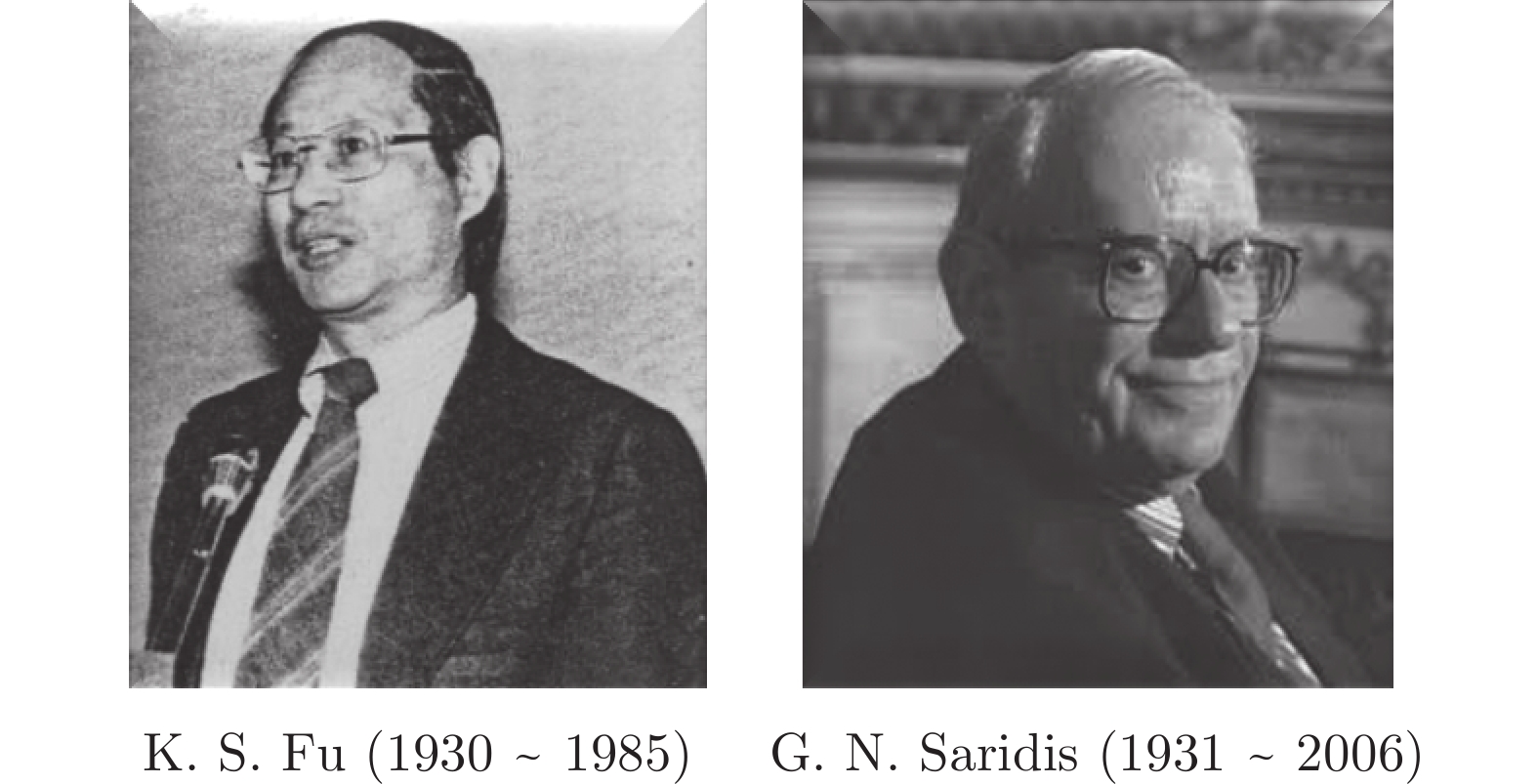
 下载:
下载:


